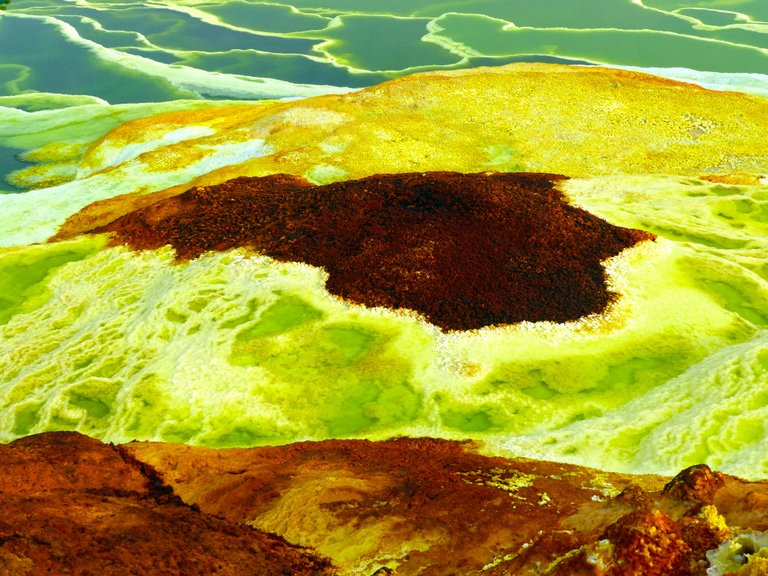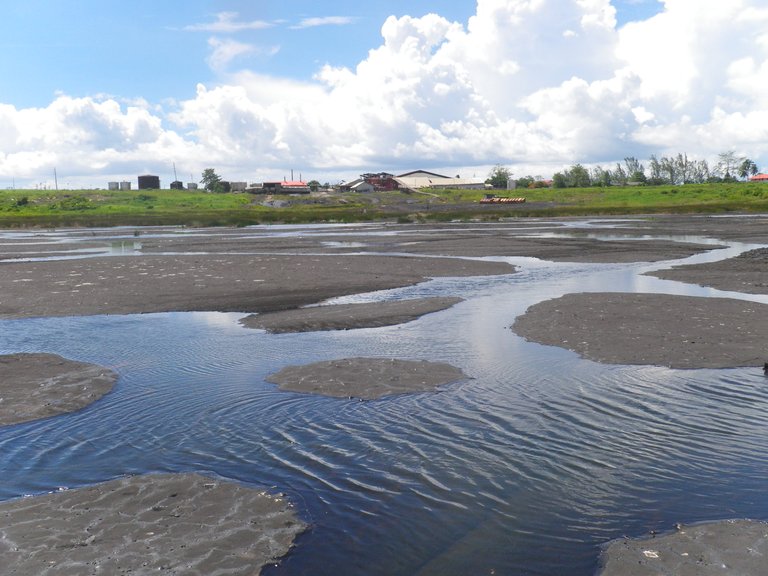If you decide to go on a vacation, you might end up around some lake since they are a beautiful sight to behold, coupled with the fact that they house life. Lakes make our planet beautiful and they give us this refreshing ambience but not all lakes display these characteristics. In fact, there are some lakes that are quite weird and can make us wonder if they are lakes or something else.
Would you believe your ears if you were told that there is a lake that doesn't support life form. This is strange because water is known to support life form even in their extreme cases. In the Atacama desert of South America, scientists were still able to find single-celled organisms in rocks that extracts water from the air. In extreme conditions like that of Jigokudani hot springs in Japan, microbes still live in the water even when it is acidic but not all water bodies can support life.
Tha Dallol Geothermal Field in Ethiopia is one lake that doesn't support life and this is due to a lot of reasons like its super acidity, super hot, and super salty characteristics. The pool of water is located on a volcanic crater which releases toxic gasses from the crack on the ground, and it is made up of salt. In 2016, scientists that study extremophiles checked if there was any living thing in this lake and they collected 200 water samples from different location in the area to check for life. They were not able to find any native life home to this lake but they found certain bacteria that could have been from humans or lab equipment, or that was able to get in from dust.
There are a lot of reasons why no living being would live in this lake with the first being temperature. The temperature of the pool ranges from 40 degrees to 180 degrees Celsius but then we have thermophilic bacteria so if it was temperature alone, living organisms would have survived but there is more to it. This lake is highly acidic and when they react with water, they produce ions which are eager to destabilize the protein of cells. While acidity and temperature is a deadly combination, it lake is also extremely salty causing living cells in the lake to shrink as a result of releasing water from it. This would happen because the concentration outside the cells is higher than the concentration of salt inside the cells.
Still on salt, magnesium are chaotropic as they break hydrogen bond in water molecules thereby preventing cells from being able to use the water for chemical reactions that is needed for them to stay alive. Why there are no organisms in this lake is still surprising because there are thermophiles that can withstand extreme temperature, acidophilles that can live in acidic region, and there are halophiles that are able to withstand extreme salinity. There are organisms that belong to one or two of these but it looks like Dallol Geothermal Field is one that is equipped extreme factors that prevent live such as the salinity being 50% compared to the ocean being 3.5%, and other factors are just too extreme.
Another interesting lake is the pitch lake in Trinidad but instead of water, this lake made of asphalt where oil (hydrocarbon) comes out of the ground. Pitch lake is the largest naturally occurring asphalt lake on earth, and it traps large animals leading to their death.
The lake is said to occur as a result of a tectonic plate forcing itself under another causing oil deposit to come to the surface of the earth along with water and mud. Although it has little water and oxygen, the lake still houses living things as a 2011 study showed that the pitch lake is home to over 10 million organisms in a single gram of the lake.
While you might want to go for a vacation to see a beautiful lake, you can bear in mind that not all lakes are fun to be in and not all lakes are made up of water for life formation while some that houses some life forms aren't water but rather hydrocarbon.
Reference
https://www.indiatoday.in/education-today/gk-current-affairs/story/scientists
https://phys.org/news/2019-11-scientists-earth-life.html
https://pmc.ncbi.nlm.nih.gov/articles/PMC6459281/
https://pmc.ncbi.nlm.nih.gov/articles/PMC7237766/
https://phys.org/news/2010-04-microbes-natural-asphalt-lake.html
https://www.indiatoday.in/education-today/gk-current-affairs/story/scientists
https://phys.org/news/2019-11-scientists-earth-life.html https://pmc.ncbi.nlm.nih.gov/articles/PMC6459281/ https://pmc.ncbi.nlm.nih.gov/articles/PMC7237766/ https://phys.org/news/2010-04-microbes-natural-asphalt-lake.html

